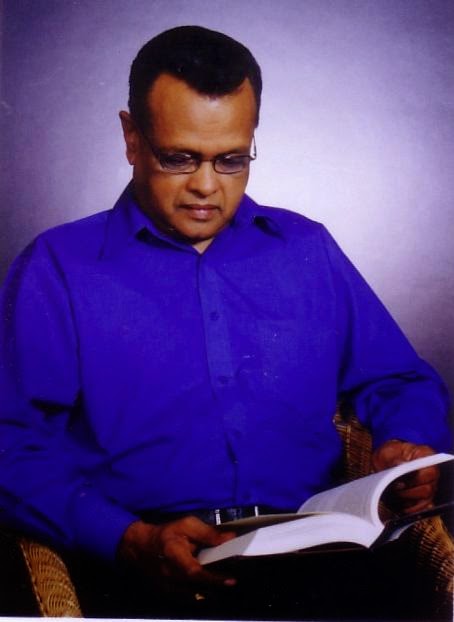Ganesh Utsav at Ram Mandir in Auckland marks His birthday
Thakur
Ranjit Singh
Shri Ram Mandir Charitable Trust introduces Indo-Fijian Hindus to
Ganesh Chaturthi, and celebration of birth of Lord Ganesh. All are invited to
the festivities at Ram Mandir in Henderson on Saturday and Sunday 6th
and 7th September, 2014.
 |
| Ganesh is widely worshiped as the god of wisdom, prosperity and good fortune and traditionally invoked at the beginning of any new venture or at the start of travel |
For Indo-Fijian Hindus, celebration of birthdays of
deities come naturally, especially the elaborate ways of over a week
celebration of Ram and Krishn. However, birthday of Lord Ganesh, which is
marked during Ganesh Chaturthi has not been celebrated as elaborately as birth
of Ram and Krishn. This may be because Ganesh Chaturthi is mostly widely
celebrated in Maharashtra, Gujarat, Tamil Nadu, Goa, Andhra Pradesh, Karnataka, Odisha, Kerala and Chhattisgarh. In Fiji, the majority of Girmitiyas came from
Indo- Gangetic plains, from Bihar, Uttar Pradesh and nearby areas, hence it did
not get that much prominence in Fiji. But things are changing with a globalised
world and all are now getting an insight into birthday of Ganesh.
Ganesh Chaturthi is the Hindu festival celebrated on the birthday (rebirth) of Lord Ganesh, the son of Shiv and Parvati. It
is believed that Lord Ganesh bestows his presence on earth for all his devotees
during this festival. It is the day when Ganesh was born. Ganesh is widely
worshiped as the god of wisdom, prosperity and good fortune and traditionally
invoked at the beginning of any new venture or at the start of travel. The
festival, also known as Vinayak
Chaturthi ("festival of Ganesh") is observed in the Hindu calendar month of Bhaadrapad,
starting on the shukla chaturthi
(fourth day of the waxing moon period). The date usually falls between 19
August and 20 September.
 |
| Baby Ganesh |
During the festivity,
there are traditions and rituals that people perform during the Ganesh
Chaturthi Hindu festival. People begin preparing months in advance by making
check lists, selecting eco-friendly idols, reading up yummy recipes and
thinking of innovating decoration ideas to celebrate the festival on a grand
scale. Hindus also follow the rituals in Bringing Home the Ganesh Idol, many of
whom choose to perform the Ganesh Staphna (Installation of the Idol) by
themselves including performing the Ganesh Visarjan (Immersion)
For the first time for
Hindus in Henderson, Auckland, Shri Ram
Mandir Charitable Trust (SRMCT) is organizing Ganesh Utsav at its (partly
completed) Ram Mandir complex at 11 Brick Street, Henderson, Auckland. For the
convenience of people, arrangements are made for a Samohik (combined) Pooja of 2 days.
This will be held on Saturday 6 and Sunday 7
September, 2014. The
programme begins on Saturday 6 at 7pm with Bhajans, Sthapna at 8pm, followed by
cultural items at 8.45, rounding off with mahaprashad (dinner) at 9.30 pm.
 |
| Ram Mandir and Community Centre, as it will look after completion. |
On Sunday
7th September, pooja is from 9-11am, with Sampuram Yagn at 11am,
prasad and mahaprashad at 12pm and Visarjan at 1pm. This will be through a bus
trip for devotees to take Ganesh murti for visarjan at sea. Devotees need to
register for the bus trip.
For the
first time, SRMCT is organizing this Samohik Pooja of multiple families,
sitting in rows of 10, performing pooja collectively. For a contribution of
$201, each family gets a reserved numbered pooja space, a 5 inch Ganesh Moorti,
all pooja samagri for 2 days, singhasan and pooja vedi for families to take
home.
 |
| Singhasan, Ganesh Murti and Pooja Vedi will belong to the devotees after Pooja |
Each day,
devotees will have to bring 21 laddoos, flowers, prashad, dubh grass and
individual or combination of 108 items, comprising of almonds, cashew nuts, sultanas, mishri (candy), flowers or dubh
grass.
Pradhan Acharya is Pundit Nand Lal Shastri and
his assistant is Pundit Vishal Joshi. Booking is necessary and can be through
Umesh (mobile 022 681 1763) or any Trustee.
Devotee families are urged to be part of
this historic occasion where we all get together for a collective celebration
and prayers. Do not be disappointed, register quickly as we have only hundred
numbered and reserves spaces. For further information visit SRMCT’s website at www.shrirammandir.org.nz
or contact the Executive Trustee Pravin Kumar at pravin_lotus@hotmail.com.
E-mail: thakurji@xtra.co
[About the author: Thakur Ranjit Singh is
blogger at KIWI PUNDIT and FIJI PUNDIT, is a media commentator and Volunteer Media
Liaison Officer for Ram Mandir Charitable Trust]



















